
Happy 66th Birthday, Maplewood!
Guess who’s turning 66?! And YOU get the presents along with a week of fun Maplewood history!
We’re only a week away from Maplewood’s 66th birthday! In a vote at the New Canada Township Hall on February 26, 1957, locals decided to take the remaining unincorporated New Canada Township land and form the Village of Maplewood!
Join us on social media this week for a virtual birthday bash to celebrate our city’s amazing history! And we’re not asking for gifts but we have some gifts for you!
Celebrate Maplewood’s 66th birthday with us and we’ll be giving away a jumbo birthday basket of history books, cards, and other goodies, as well as other presents on Maplewood’s big day, Sunday, February 26, 2023!
To be entered in our prize drawing, please enter or update your contact info, favorite Maplewood memory, historical fact, or favorite photo via the following form to sign up for MAHS history, information, news, and update
>>> https://form.jotform.com/230484636591159
Join us all this week as we countdown the days to Maplewood’s 66th Birthday with the Maplewood Area Historical Society!
SUNDAY: MAPLEWOOD’S FIRST OFFICIAL MAPLE TREE PLANTING
Photo below shows the planting of the first official maple tree in Maplewood, in the summer of 1957.

The tree was a gift from Mayor Waldo Luebben to councilman Ed O’Mara to commemorate Maplewood’s becoming a village. Both had been supervisors of New Canada township.
Mayor Luebben, a nurseryman by profession, donated this Schwedler maple tree that is noted for its red leaves in springtime before turning to a dark green in late summer.
Left to right: Mary Katharine O’Mara, Michael Francis O’Mara, Delores O’Mara holding the tree, Elizabeth Jo O’Mara, Mayor Waldo Luebben in black shirt and Ed O’Mara holding the shovel.
MONDAY: WHY IS MAPLEWOOD SHAPED LIKE THAT?
Join us for another day of Maplewood’s history as we approach the city’s 66th birthday! Today we answer the question “Why is Maplewood shaped like that?”
Maplewood is definitely the strangest shaped city in Minnesota, with bites of our landscape taken out by Little Canada and North St. Paul, as well as that long leg stretching the length of the county!
But just why is Maplewood shaped the way it is?
As St. Paul grew in the late 19th century, the city annexed more and more land from surrounding New Canada and McLean Townships. By 1890, McLean township had been reduced to a small strip of land bordered by McKnight Road to the west, Minnehaha Avenue to the north, Century Avenue on the east, and Bailey Road on the south. Too small to remain an independent township, the roughly five square miles remaining of old McLean Township were incorporated into New Canada township, creating the future Maplewood’s “Southern Leg.”
Two years earlier, in 1888 Henry A. Castle organized the city of North St. Paul, taking the northeast corner of the township as an incorporated city. For the next 65 years, New Canada Township remained virtually intact with a township board meeting at the Old Township Hall located in the unincorporated community of Gladstone. In 1953, the community of “St. John’s” incorporated as the Village of Little Canada, taking possession of the northwestern corner of the township.
By 1957, the first buildings were completed at the Minnesota Mining and Manufacturing Company – 3M’s new campus in the south leg of New Canada Township. With further building projects planned and underway, along with plans for new highways, and a nearby Federally funded interstate, New Canada Township leaders decided it was time to secure its place in the region. Residents voted to incorporate as the Village of Maplewood on February 26, 1957, annexing the remainder of New Canada township into the growing suburb, leaving us with the abstracted city shape we have today.

For more information, see:
WCCO reporting on the Shape of Maplewood at this link: https://www.facebook.com/CBSMinnesota/videos/10155503077253825/
“Becoming a City” by Robert Jensen, prior MAHS President: https://maplewoodmuseum.org/2023/01/15/becoming-a-city/
Tuesday: MAPLEWOOD’S FIRST Name
Long before Maplewood was named Maplewood, or Glouster Station, or Gladstone, or New Canada Township, this land was called Mni Sota Makoce.
This Indigenous Dakota phrase is where Minnesota’s name originates. If we were to directly translate “Maplewood” into Dakota, the name would be “chanhasan” — a name already represented in another, more southwesterly suburb. Despite the fact there were actually very few maple trees in historic Maplewood, this “makoce” land or homeland was the place the local Mdewakanton Dakota still call “Mni Sota!”
Want to find out what Maplewood’s first name Mni Sota Makoce means in Dakota and learn more about the Dakota people? To find out, take our History Trivia Tuesday quiz while helping us celebrate Maplewood’s 66th birthday!
Quiz Link: https://qz.app.do/maplewood-s-first-peoples-the-dakota-3398274
Wednesday: Alice Olson and the Maplewood before Maplewood
One of Maplewood’s favorite teachers, Alice A. Olson (Lindstrom) was born in 1894 in St. Paul to Swedish parents John and Augusta Lindstrom. Her father, John Lindstrom, helped build the first school building for Ramsey County’s Rural District #8 – a public school district also known as the “Maplewood School,” where Alice Olson would become a teaching principal 26 years before the creation of the village of Maplewood.
Alice Olson began her teaching career in 1914 at the small, wood-framed rural school District #12 located off Hudson Road in then-rural Ramsey County, MN. Her students playfully referred to the District #12 building as the “two-by-four” or “The Cracker Box.” Alice Olson taught for two years at District #12, then in the autumn of 1916 she moved to District #1, the Edgerton School, located on Edgerton Street.
In 1929, a larger new brick school building replaced the old District #8 school building that Alice Olson’s father helped construct decades earlier. Dedicated on Friday, September 13th, 1929, this school was named Maple Wood / Maplewood and was located at the intersection of White Bear Avenue and County Rd C, approximately where the Harmony Learning Center is located today. In 1931, Alice Olson became the teaching principal at this new District #8 Maplewood Public School, remaining there until 1941.
This school name may have inspired local New Canada Township officials to choose the name “Maplewood” almost thirty years later in 1957 when they drafted the proposal to organize the remaining unincorporated township land into a village.
Interestingly, the District #8 Maplewood School did not feature maple trees on its grounds, although the school maintained an impressively large lawn. During Alice Olson’s tenure at the Maplewood School, staff and school board members discussed and agreed to purchase maple trees to plant on the school grounds. However, the school instead received American Elm trees from a local nursery.
Alice Olson’s classroom at the Maplewood School faced White Bear Avenue; her students hung art projects in the windows where passers-by could enjoy the students’ creativity.
The District #8 Maplewood school building was demolished on August 8, 1992, but its name and history are still tangible in the city of Maplewood and the collection of the Maplewood Area Historical Society.
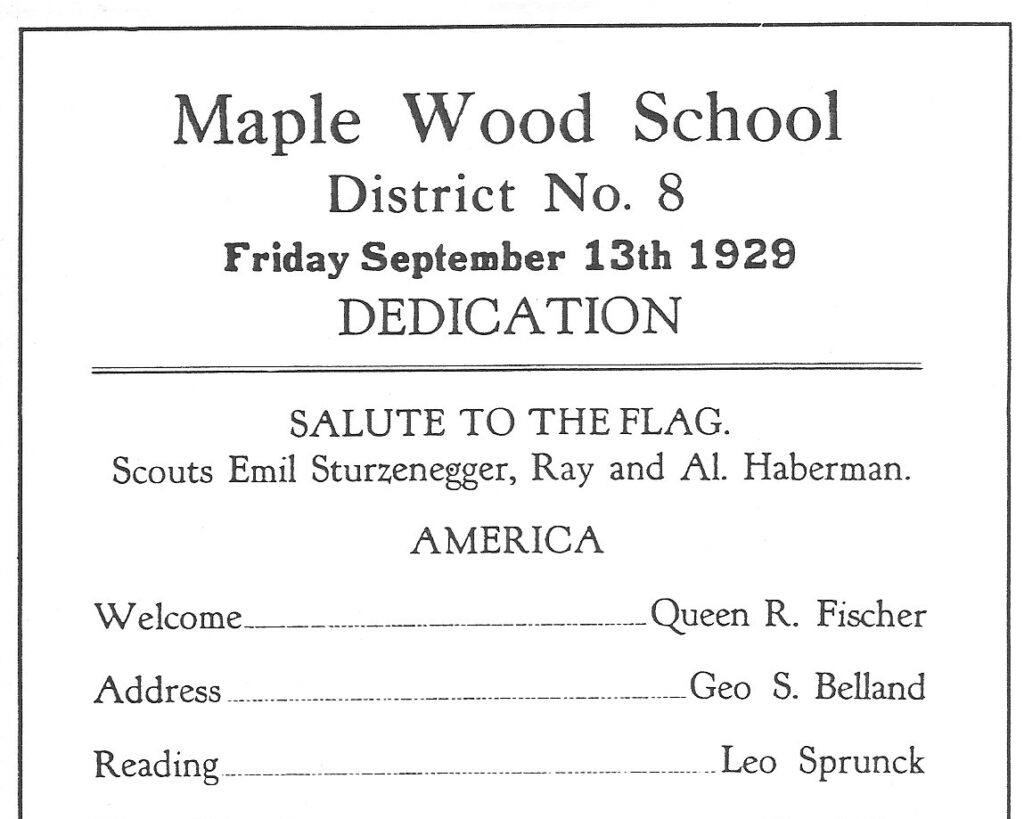


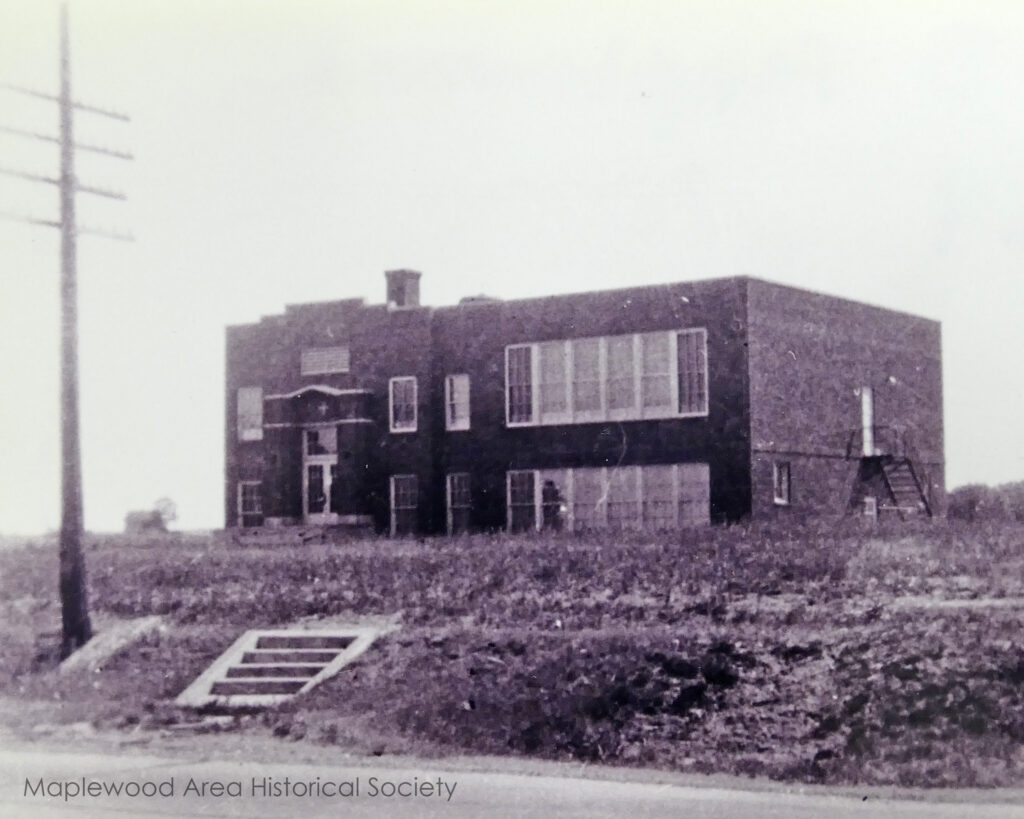
THURSDAY: Truck Farming and MAplewood
For the 1.8 million Minnesotans who descend from German immigrants, memories of family dinners often invoke images of freshly grown vegetables. German immigrants brought with them many traditions, including a desire to enjoy fresh fruit, vegetables, and salads every day. They were accustomed to a diverse and varied diet and brought those traditions to America. In keeping with their customs, they planted very large gardens that often extended their season of production beyond the months of summer with cold frames, hot beds, and greenhouses.
Not only did their gardens harvest enough food to feed their families, it also provided a crop large enough to sell at market. Thus, many of Maplewood’s early German immigrants quickly adapted to selling fresh produce at the St. Paul Farmers Market which has been in existence since 1853.
Fresh produce was first delivered by horse-drawn wagon and later with trucks thus the term “truck farming” emerged. Truck farms were small acreage family farms that grew a variety of fruits and vegetables. This was a relatively simple way for new immigrants to earn a living since it didn’t require the financial investment like that of a large-scale wheat and other cash crop operations.
Maplewood farmers of years past include citizens such as Henry Speiser who brought cabbage to market first by horse and wagon and later by his farm truck, pictures included in this post. There is also the family of Peter Koch who sold many vegetables, but primarily celery. The Gerten family grew their truck farming enterprise into a large operation nursery that still exists today. The farm picture attached to this post shows the early Gerten family farm during the truck farming era.
Among today’s food growers, Hmong families also celebrate the tradition behind farm trucking.
Truck farming was quite prevalent in the United States until the country began to adapt the speed in which food became available to the consumer. Until the 1920s, early grocery stores simply offered dry goods and were manned by clerks at a counter-service type store. In the 1930’s, fresh produce, meat, and bread began to be made available and customers began to embrace department-oriented shopping.
By World War II, the advent of new technology involving trucks and refrigeration allowed grocery stores more options to store food in longevity. In addition, the stores were able to offer a variety of international foods returning servicemen experienced while serving abroad. The rise in supermarkets gave rise to commercially sized farms and truck farming fell by the wayside.
Thanks to MAHS Volunteer, Kara McGowan for her research into this post! Stay tuned later this spring for a full article on truck farming in Maplewood by Kara McGowan!

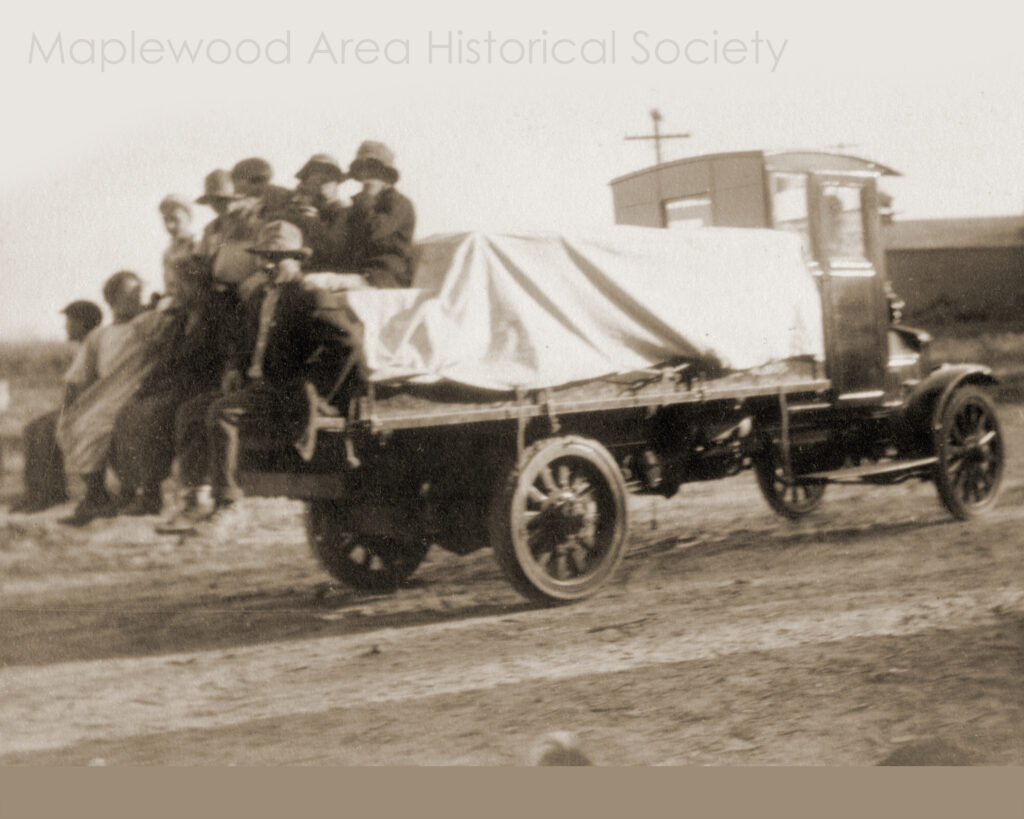
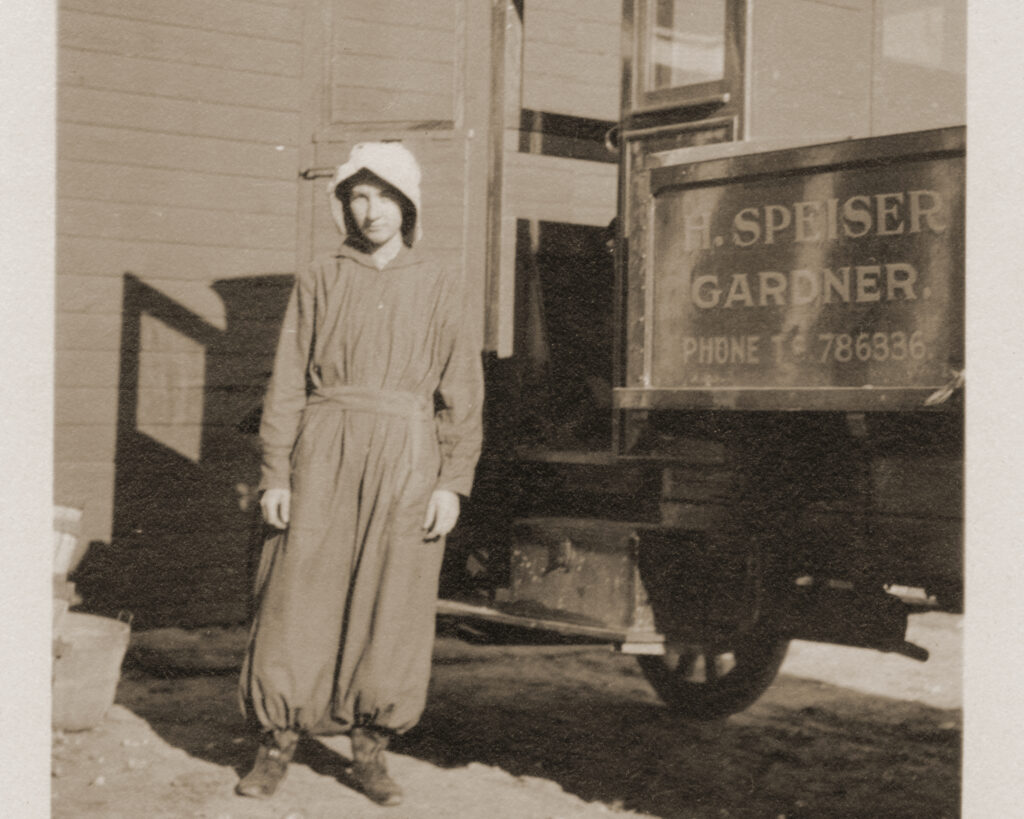
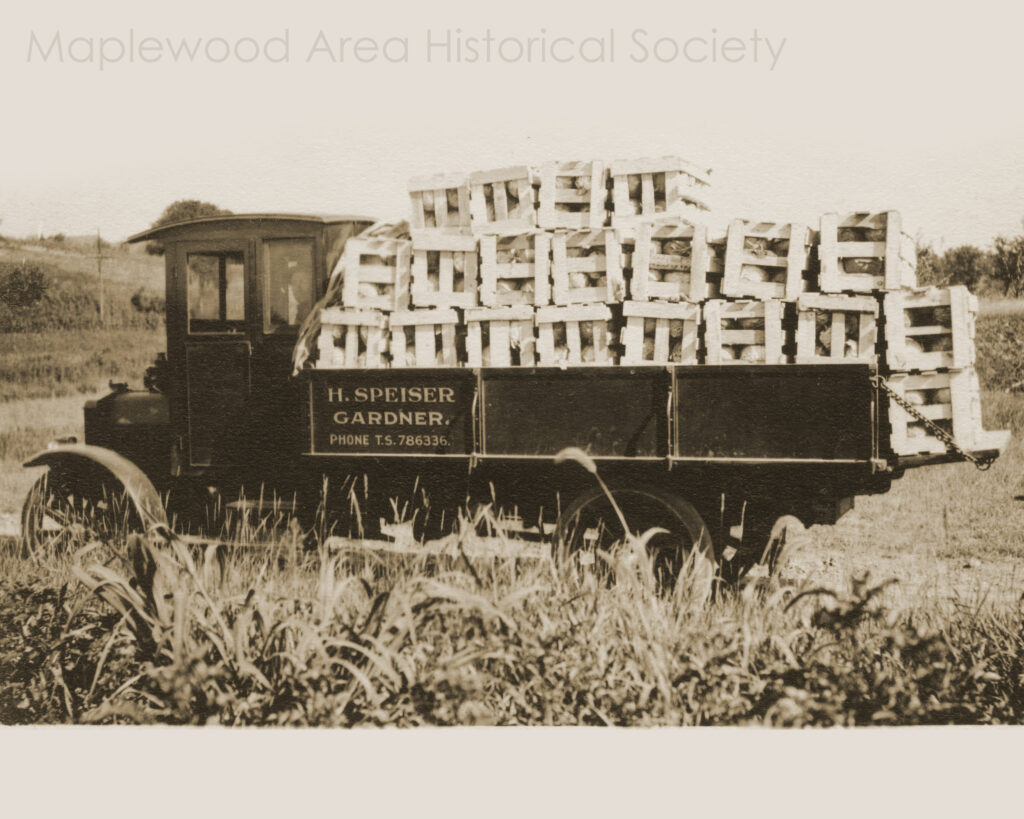
Friday: Bison occidentalis
Happy Friday! Only two more days until Maplewood’s 66th birthday and our drawing for the big birthday basket!
Today, we’d like to share the oldest artifact in our collection … A locally discovered Bison occidentalis skull!
The skull was unearthed by Whitey Morgan in a peat bog at the northwest corner of Hazelwood Street and Beam Avenue, and is dated to approximately 7,000 years ago.
This ancient bison most likely perished after becoming stuck in the soft, spongy ground of the peat bog, which also helped to preserve the skull.
Some folks have said we should give this Bison occidentalis skull its own “nickname.” What do you think? Any suggestions?








